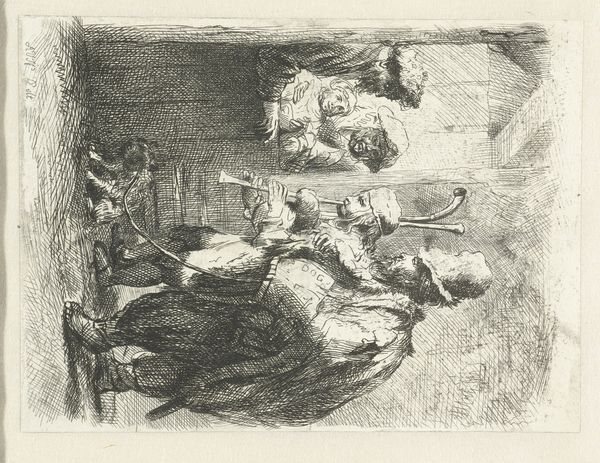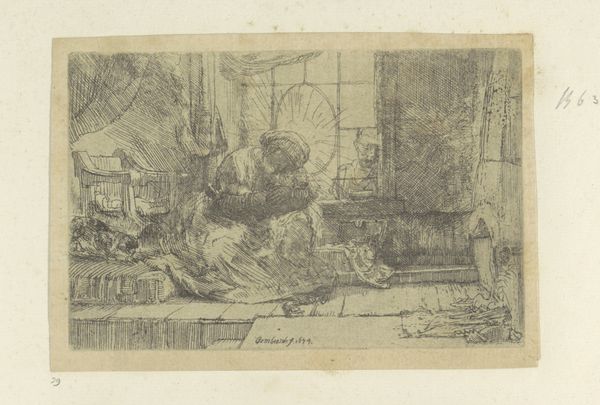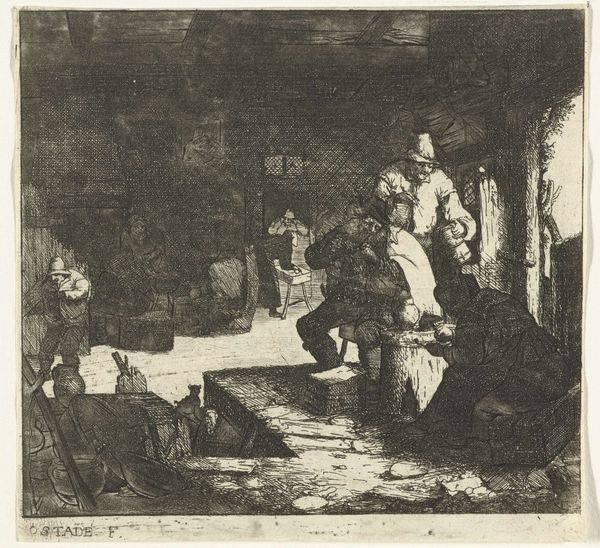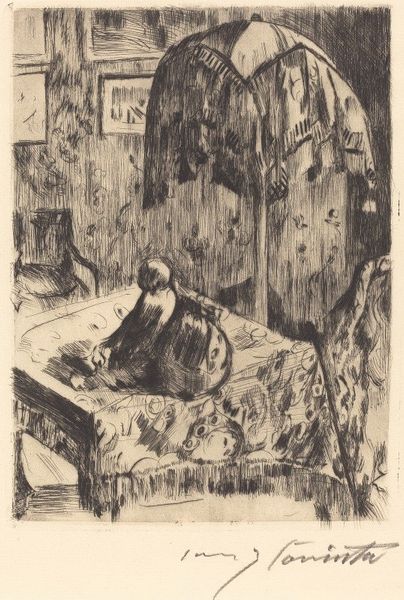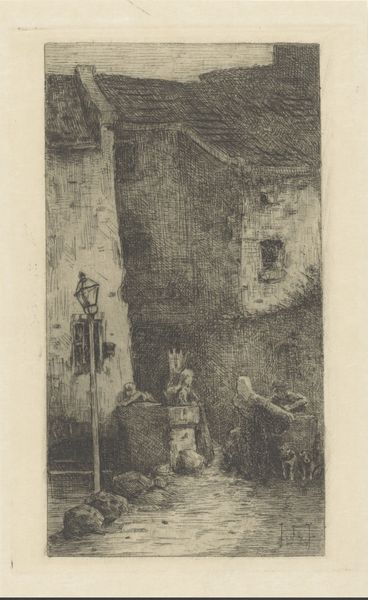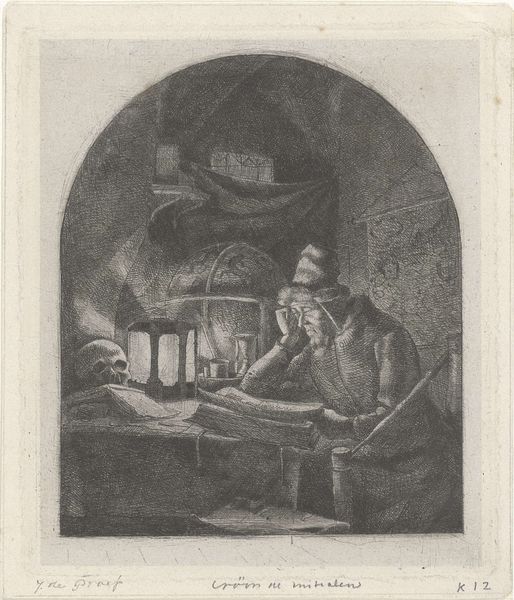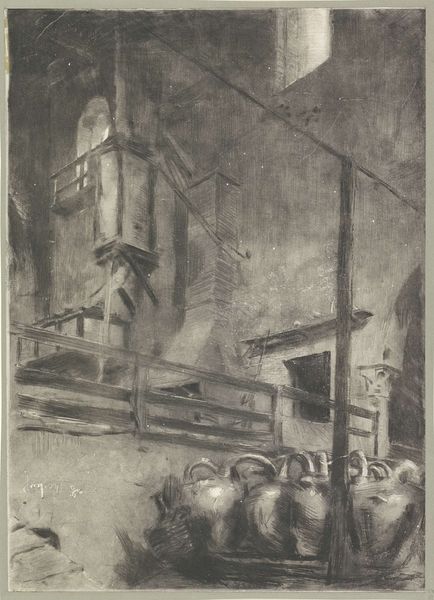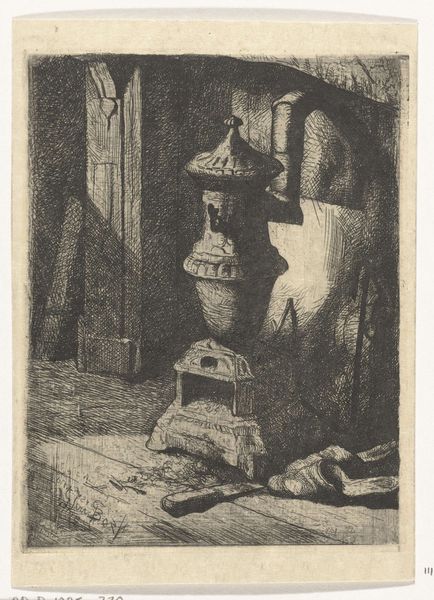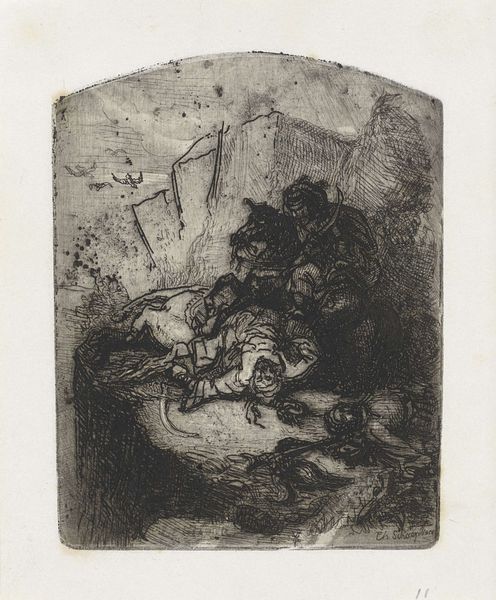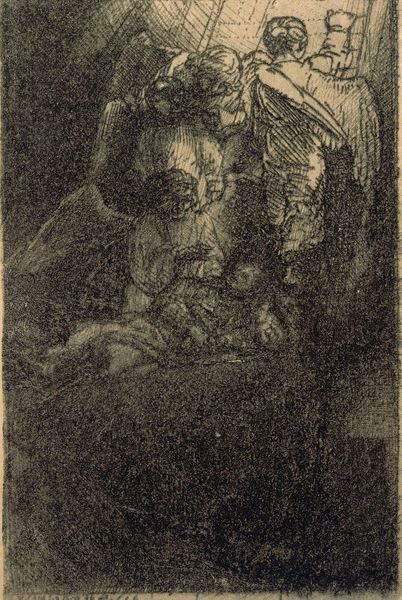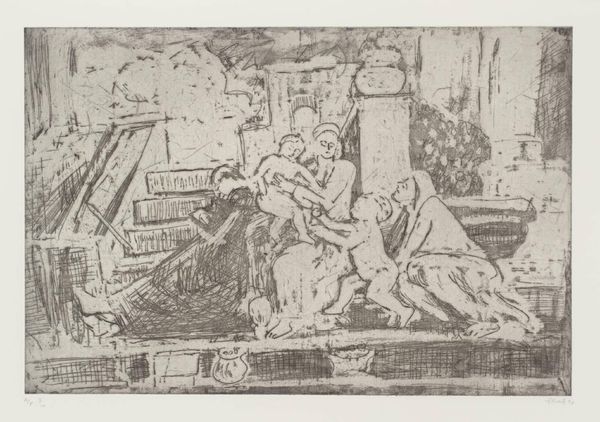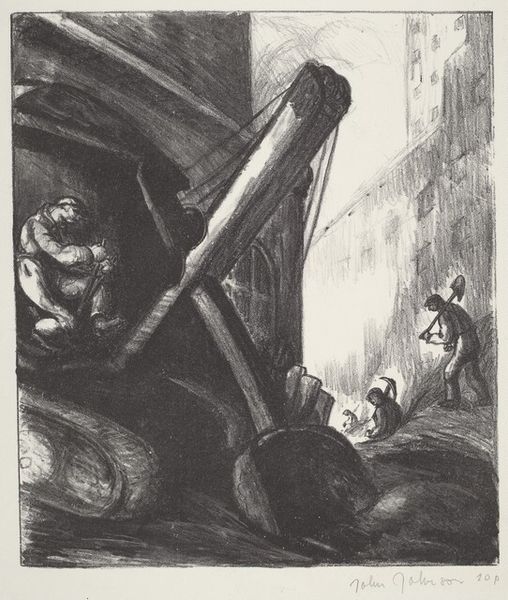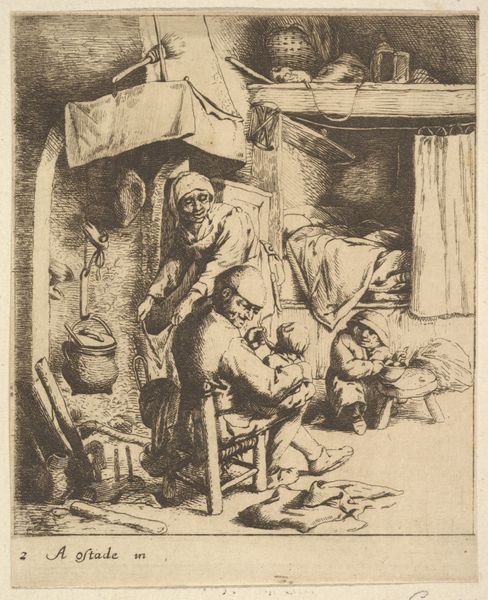
print, etching
#
narrative-art
#
baroque
# print
#
etching
#
landscape
#
figuration
#
line
#
history-painting
Dimensions: height 245 mm, width 201 mm
Copyright: Rijks Museum: Open Domain
Curator: At first glance, I’m struck by the composition’s density, almost claustrophobic, despite depicting an open landscape. There’s so much packed into the scene, a sense of overwhelming action. Editor: Indeed. We’re looking at "The Good Samaritan," an etching crafted after 1633 by Salomon Savery, currently residing at the Rijksmuseum. Savery vividly portrays this well-known biblical parable. The etching's stark lines and dense composition powerfully convey the drama of the story. Curator: The symbolism is rather clear here, wouldn't you agree? The vulnerable figure represents not just physical injury but the potential spiritual wound, whereas the Samaritan, elevated on his horse, is the emblem of hope and mercy. Editor: Precisely. And I think it's also worthwhile to observe how artistic license functions in relation to historical and political narratives. Savery translates this very pointedly, the symbols that comprise the story reflect anxieties around inequity that were likely as potent then as when the Gospel account first began circulating. The depiction almost forces viewers to ask themselves about who assumes positions of power and influence in social institutions, and for what reasons. Curator: That's fascinating, contextualizing Savery’s creation within those contemporary socio-political structures. Do you see any influence from printmakers working with Rembrandt at the time? Editor: I definitely see some shared baroque sensibilities there. Particularly within the interplay between darkness and light. But where many of the other printmakers working within the same broad period emphasized portraiture or close figure studies, I see Savery here working almost to tell a complete landscape history alongside figuration. What appears merely illustrative to some might seem like it works toward expressing how individual histories relate to physical geography. Curator: Perhaps the linear intensity heightens this connection, reinforcing that narrative structure we mentioned earlier. Editor: An intriguing theory. This really illuminates how an artwork on such a scale manages to invite so much close looking, which reflects not only artistic intention, but also deeply held historical anxieties that it both exposes and seeks to ameliorate through powerful symbols.
Comments
No comments
Be the first to comment and join the conversation on the ultimate creative platform.
